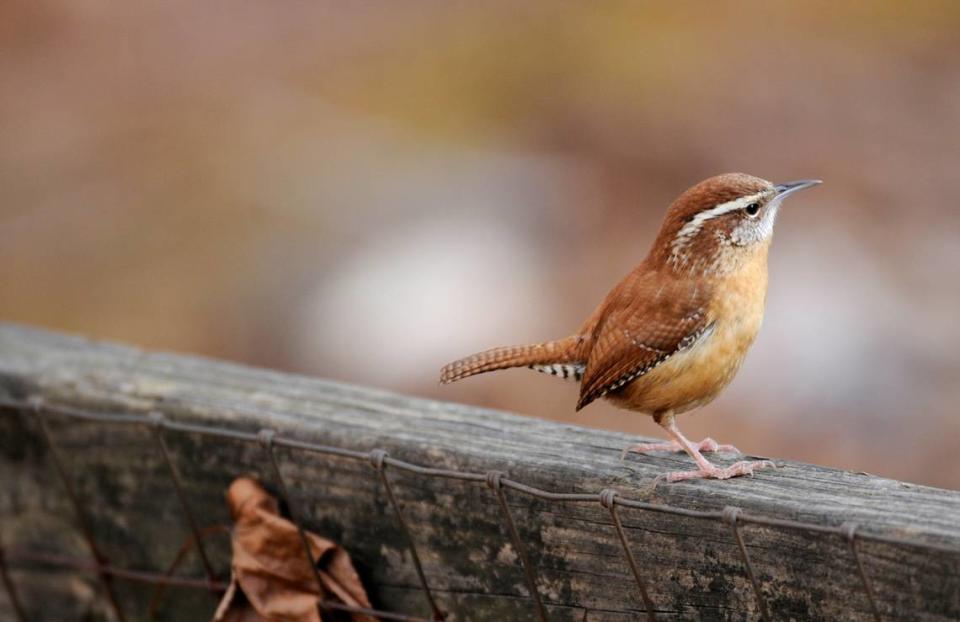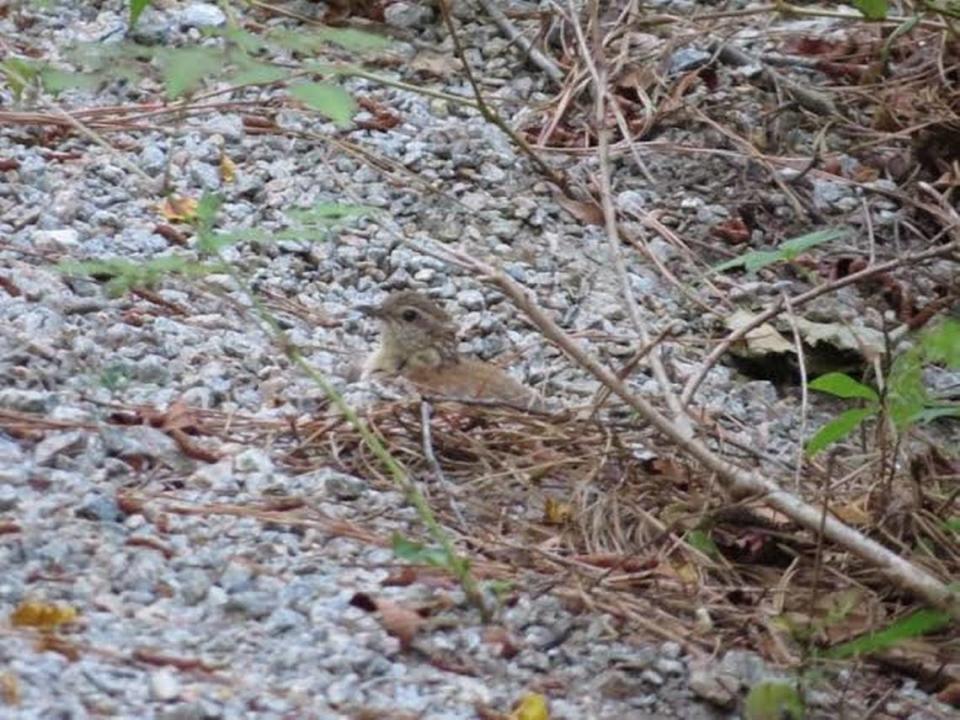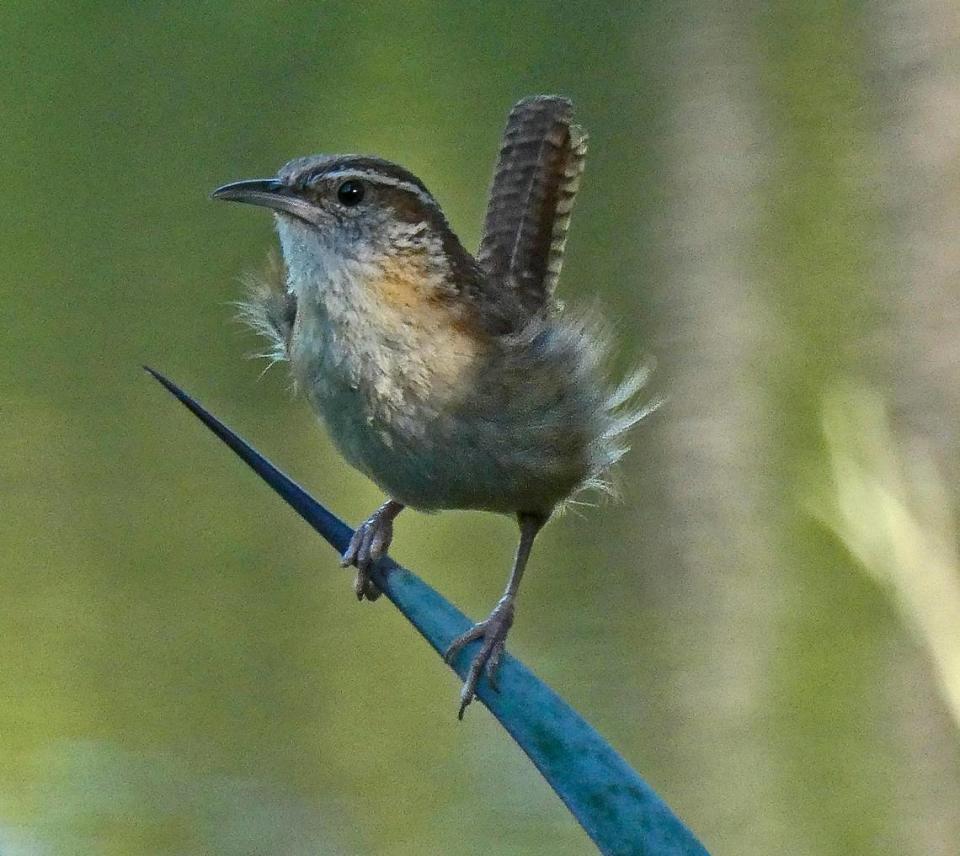The SC state bird stays year round. Here’s how to identify and attract it to your home
Did you know that South Carolina has its own designated state bird?
The Carolina Wren, ideally named for its new position with the state, was designated as the official state bird for South Carolina in 1948 by Act Number 693 signed by Governor Strom Thurmond. This Act repealed an earlier Act, which had previously designated the Mockingbird as the state bird.
In addition to its new status, this act also made it a crime to intentionally kill a Carolina Wren.
Unlike many others, the Carolina Wren (Thyrothorus ludovicianus) is not a migratory bird.
The wren was deemed a better choice than the Mockingbird due to the nature of its name by having “Carolina” in it as well as its permanent residence in every part of South Carolina. The Carolina Wren also sings practically year-round.
This wren is a small, energetic bird, which is about 5 to 6 inches in length, and frequents human dwellings and gardens, as well as its own wild habitats, according to the South Carolina Encyclopedia.

Overall, the wren is covered in multitudes of various shades of brown. It displays chestnut brown upper parts, cinnamon under parts, and a distinctive white stripe over the eye, the SC Encyclopedia continued.
As this bird can be found along the eastern U.S. and into Central America, preferring warmer weathered climates, this bird’s scientific name means “reed-jumping [bird] of Louisiana.”
Male and female wrens will remain a pair for the entire year round and may mate for life, continuing this bond until one passes away.
Most commonly, these birds will nest in undergrowth, suburbs and gardens as well as being common in the undergrowth of deciduous or mixed woods and in thickets along forest edges. They are also frequently found in suburban areas, especially where there is dense low growth and tangles have been left undisturbed, reported the National Audubon Society.

These wrens will nest anywhere, but tend to favor places where bushes or a large amount of brush is present, said Kay Grinnell, the president for the Hilton Head Audubon.
These little birds are very outgoing, can frequently be seen in people’s yards and even like to hop all over my patio, Grinnell said.
In the wild, Carolina Wrens eat a variety of insects, such as spiders, caterpillars, beetles and grasshoppers. These birds also tend to forage in pairs.
Occasionally, they will also catch and eat small lizards and tree frogs.
When visiting feeders, they will eat seeds or nuts when provided as well as berries and small fruits.
In the winter, when natural food sources become scarcer, many wrens may depend on feeders for food.
To attract a Carolina Wren pair, try putting out some of their favorite treats.
“Although sunflower seeds might attract more colorful birds, Carolina Wrens generally prefer suet and peanuts. One peanut alone can provide more than a third of their daily metabolic need, reported Project FeederWatch.
When nesting, the male and female pairs will defend their permanent territories and oftentimes duet with one another.

Their nests will generally be located less than 10 feet above the ground and will often be a domed nest, with an entrance on the side, with both birds helping to build, but the female adds most of the lining in the end, detailed the National Audubon Society.
Once the nest is built, the female Carolina Wren will usually lay about four eggs in successive days and can then hatch at any time of day. They will then take a little more than two weeks to hatch, detailed Grinnell.
The female sits on the nest until her eggs hatch. In the meantime, the male brings her food and will even visit the female when he is without food, Grinnell continued.
Carolina Wrens will have three broods in a single year in South Carolina — meaning she will lay eggs this many times.
Both will take turns to feed hatchlings and will only feed them insects.
In addition, cleanliness is prioritized when the chicks are still in the nest.
Carolina Wren chicks will create fecal sacks after they have been fed and will generally leave them along the outer edge of the nest for removal, sort of like a bird diaper. Thus, the nest never gets soiled. The parents will either eat the fecal sac or carry it away.
Then, two weeks after hatching, the chicks will go out on their own.

